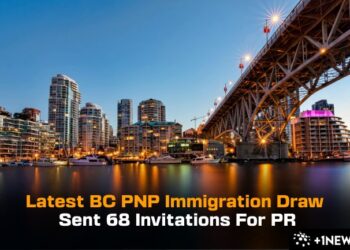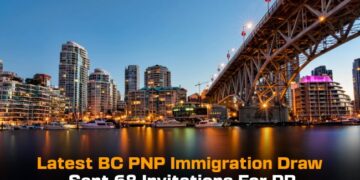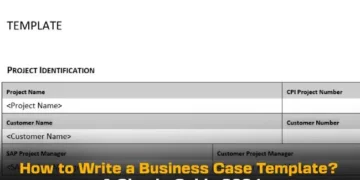Are you planning to immigrate to Canada? The Express Entry system is one of the most popular pathways for aspiring immigrants. Introduced by the Canadian Government, this online immigration system offers a fast pathway to permanent residency.
This guide provides comprehensive details about the Express Entry system, including how to create a profile, eligibility requirements, and how to maximize your chances of success.
- What is the Canadian Express Entry System?
- Key Programs
- Who Can Apply?
- Basic Requirements
- Introduction of Category-Based Selection
- What is Category-Based Selection?
- Key Points to Know:
- Express Entry Draws
- What are Category-Based Rounds of Invitations?
- How Does the Comprehensive Ranking System (CRS) Work?
- Types of Rounds of Invitations:
- How Does the Express Entry System Work?
- Essential Documents for Your Profile
- Express Entry Step-by-Step
- Monitoring Your Profile
- The Costs Involved
- Express Entry vs. Permanent Residency
- How Does A Job Offer Impact Your Profile?
- Why Does My Express Entry Application Take Time?
- Age Limit
- Can I Apply Twice for Express Entry?
- Correcting Mistakes in Your Express Entry Profile
What is the Canadian Express Entry System?
The Express Entry system is an online system that the Canadian government uses to manage applications from skilled immigrants aspiring to obtain Canadian permanent residence. It’s the fast track to becoming a Canadian permanent resident, processing applications in as little as six months.
Key Programs
The Express Entry system manages three federal economic programs:
- Federal Skilled Worker (FSW): For workers with skills in demand in Canada.
- Federal Skilled Trades (FST): For workers with qualifications in a skilled trade.
- Canadian Experience Class (CEC): For workers with Canadian job experience.
Through a Comprehensive Ranking System (CRS), this system ranks candidates based on their skills, qualifications, and other factors. The ones with the highest scores stand a better chance of receiving an Invitation to Apply (ITA) for permanent residence.
Who Can Apply?
Express Entry is designed for individuals with:
- University or college degrees,
- Skilled work experience,
- Moderate proficiency in English and/or French.
Basic Requirements
To be eligible for the Express Entry system, you should:
- Work Experience: Have at least one year of continuous full-time (or equivalent part-time) work experience in a skilled occupation within the last 10 years,
- Language Proficiency: You need to prove your English or French language proficiency through tests like IELTS or TEF. Most programs require a minimum of Canadian Language Benchmark 7.,
- Education Credential Assessment (ECA): If you were educated outside Canada, an ECA report for immigration purposes is necessary.
- National Occupational Classification (NOC) Code: Your NOC code determines your job category and skill level. It is crucial to choose the code that best matches your job description.
Introduction of Category-Based Selection
Canada has introduced category-based selections within the Express Entry system. These selections aim to prioritize candidates with specific skills, training, or language abilities.
The eligible categories include healthcare, STEM professions, trades, transport, and agriculture. Applicants must demonstrate at least 6 months of work experience in a qualifying occupation within the last 3 years.
What is Category-Based Selection?
Category-based rounds of invitations in the Express Entry pool are designed to meet specific economic goals set by the Minister. Candidates who meet the criteria for a particular category are invited to apply for permanent residence.
Key Points to Know:
Here are the important aspects of category-based selection in the Express Entry system:
1. Eligibility Criteria:
To be considered for an invitation through a category-based round, you must meet the following requirements:
- Meet the minimum criteria for Express Entry, including eligibility for one of the three immigration programs it covers.
- Fulfill all the requirements specified for the particular round.
2. Category Selection Process:
Categories are chosen based on various factors, including:
- Labour market information and projections.
- Input from partners such as provinces, territories, and stakeholders across the country.
3. Chosen Categories for 2023:
The following categories have been selected for the year 2023:
- French-language proficiency: Candidates with strong French language skills are encouraged to apply.
- Healthcare occupations: Individuals with work experience in healthcare fields have an opportunity to apply.
- Science, Technology, Engineering and Math (STEM) occupations: Professionals with expertise in STEM fields are in high demand.
- Trade occupations: Skilled workers in trade occupations are sought after.
- Transport occupations: Candidates with experience in transportation-related jobs are eligible to apply.
- Agriculture and agri-food occupations: Those with skills in agriculture and agri-food sectors have a chance to apply.
4. Category-Based Rounds and Invitations:
During a category-based round:
- Candidates in the Express Entry pool who meet the category requirements are ranked.
- Top-ranking candidates are invited to apply for permanent residence.
Express Entry Draws
Every two weeks, Canada conducts an Express Entry draw, issuing ITAs to candidates who meet the CRS cut-off for that round.
Stay Informed with +1 News about Latest Express Entry Draws
What are Category-Based Rounds of Invitations?
Category-based rounds of invitations are a fresh approach to inviting candidates in the Express Entry system. Minister Fraser establishes specific categories aligned with economic objectives.
Top-ranking candidates in the pool, who meet the eligibility criteria for the established category, receive invitations.
How Does the Comprehensive Ranking System (CRS) Work?
The Comprehensive Ranking System (CRS) ranks candidates in the Express Entry pool based on a points-based system. The highest-ranking candidates who are eligible for the round type are invited to apply for permanent residence.
Regular Express Entry rounds invite top-ranking candidates eligible for one of the three programs managed through Express Entry.
Types of Rounds of Invitations:
1. General Rounds of Invitations:
- These rounds invite top-ranking candidates eligible for one of the three programs managed through Express Entry.
- The selected programs offer various pathways for skilled immigrants to contribute to Canada’s economy.
2. Program-Specific Rounds of Invitations:
- Program-specific rounds target candidates who qualify for a particular Express Entry program, such as the Provincial Nominee Program (PNP).
- Candidates with a provincial or territorial nomination, indicating their potential to contribute to the local economy, are invited in these rounds.
3. Category-Based Rounds of Invitations:
- The Minister establishes a category to achieve specific economic goals.
- Top-ranking candidates in the pool who meet the eligibility criteria for the category are invited.
- Category-based rounds complement general and program-specific rounds, ensuring diverse skill sets are considered.
Stay Informed with +1 News about Latest Express Entry Draws
Benefits of Category-Based Rounds of Invitations:
- Enhanced selection process: These rounds enable targeted invitations based on economic priorities, ensuring a strong alignment between candidates’ skills and Canada’s needs.
- More opportunities for eligible candidates: The introduction of category-based rounds broadens the chances for skilled individuals who may have a particular expertise or background required by the country.
- Increased economic impact: By inviting candidates who can contribute directly to economic growth, the government aims to strengthen the Canadian economy.
How Does the Express Entry System Work?
The Express Entry system operates in several straightforward steps:
- Creating an online profile: Candidates create a profile, sharing details about their skills, education, work experience, language proficiency, and other relevant factors.
- Getting a CRS score: Based on the provided information, candidates are assigned a CRS score. This score determines their ranking within the Express Entry pool.
- Invitation to Apply: Periodically, the Canadian government conducts draws and invites candidates with high CRS scores to apply for permanent residence.
Essential Documents for Your Profile
Before starting your application, you’ll need to gather a few crucial documents. Here’s what you’ll need:
- Passport or Travel Document: This serves as your identification and travel document.
- Language Test Results: Prove your proficiency in English or French with IELTS, CELPIP (for English), or TEF (for French) test results.
- Proof of Education or ECA Report: For candidates applying through the Federal Skilled Workers Program or if your education was outside of Canada.
- Provincial Nomination (if applicable): Relevant documents if you’ve received a provincial nomination through a Provincial Nominee Program (PNP).
- Written Job Offer or Work Experience Proof: A job offer from a Canadian employer, or proof of your work experience can strengthen your profile.
- Proof of Funds: Demonstrate that you have sufficient funds to support yourself and your family during your initial stay in Canada.
Express Entry Step-by-Step
The Express Entry process consists of two main steps:
Step 1: Submit Your Profile
To submit your Express Entry profile, follow these easy steps:
- Create a Profile: Visit the official Government of Canada website and create an Express Entry profile. Provide accurate and truthful information about your personal details, education, work experience, language proficiency, and other required information.
- Meet the Eligibility Requirements: Ensure that you meet the criteria for one of the programs.
- Gather the Required Documents: Make sure you have all the necessary documents ready.
- Calculate Your CRS Score: Consider factors such as age, education, language proficiency, work experience, and additional points.
- Submit Your Profile: Review your profile carefully and then submit it.
Based on the information provided in your profile, you will receive a Comprehensive Ranking System (CRS) score, which determines your ranking in the Express Entry pool.
Step 2: Receive an Invitation to Apply (ITA)
If you have a high CRS score, you may receive an Invitation to Apply (ITA) for permanent residence during one of the regular draws conducted by the Canadian government. Once you receive an ITA, you will have a specified timeframe to submit a complete application for permanent residence.
Monitoring Your Profile
You can check the status of your Express Entry profile anytime by logging into your IRCC account and following the instructions. Remember, your profile is valid for 12 months, but it can be removed earlier if you become ineligible.
The Costs Involved
To immigrate to Canada via Express Entry, the approximate cost is $2,300 CAD for an individual applicant or approximately $4,500 CAD for a couple.While the fees may vary, here’s a breakdown of the typical expenses involved:
- Language tests: Average cost – $300
- Educational Credential Assessment (ECA): Average cost – $200
- Biometrics: $85 per person
- Government fees: $1,325 per adult & $225 per child
- Medical examination fees: Average cost – $450 per adult & $250 per child
- Police clearance certificates: Average cost – $100 per country
No government fees are required to submit your initial profile. The fees are only requested when you are invited to apply for Canadian permanent residence. In addition to the government processing fees, you may also need to pay provincial immigration fees if you apply through a Provincial Nominee Program (PNP).
Express Entry vs. Permanent Residency
Express Entry is not the same as a permanent residency; instead, it’s a system that manages applications for permanent residency through several immigration programs.
How Does A Job Offer Impact Your Profile?
A legitimate job offer from a Canadian employer can significantly increase your CRS score, thus improving your chances of receiving an Invitation to Apply (ITA). However, an informal job offer does not confer any points.
Why Does My Express Entry Application Take Time?
The standard processing time for Express Entry applications is six months. However, processing times may vary due to factors such as your country of residence, the type of application, and its completeness.
Age Limit
There is no maximum age limit for Express Entry applicants. However, individuals between 20-29 years receive the highest points for age.
Can I Apply Twice for Express Entry?
You cannot have two Express Entry profiles at the same time. However, if your profile isn’t invited within 12 months, you can resubmit it and remain in the pool for another year.
Correcting Mistakes in Your Express Entry Profile
If you identify an error in your profile, you can withdraw and resubmit it. If you’ve received an ITA, you can correct minor errors through the online portal or decline the ITA, correct your profile, and return to the pool.
Conclusion:
Canada’s Express Entry system provides an opportunity for skilled immigrants to fulfill their dream of becoming Canadian permanent residents. By following the step-by-step process, meeting the eligibility criteria, and enhancing your CRS score, you can increase your chances of success.
With its fast processing times, job opportunities, and access to social benefits, Express Entry offers a promising pathway to a brighter future in Canada.
Stay Informed with +1 News about Latest Express Entry Draws














